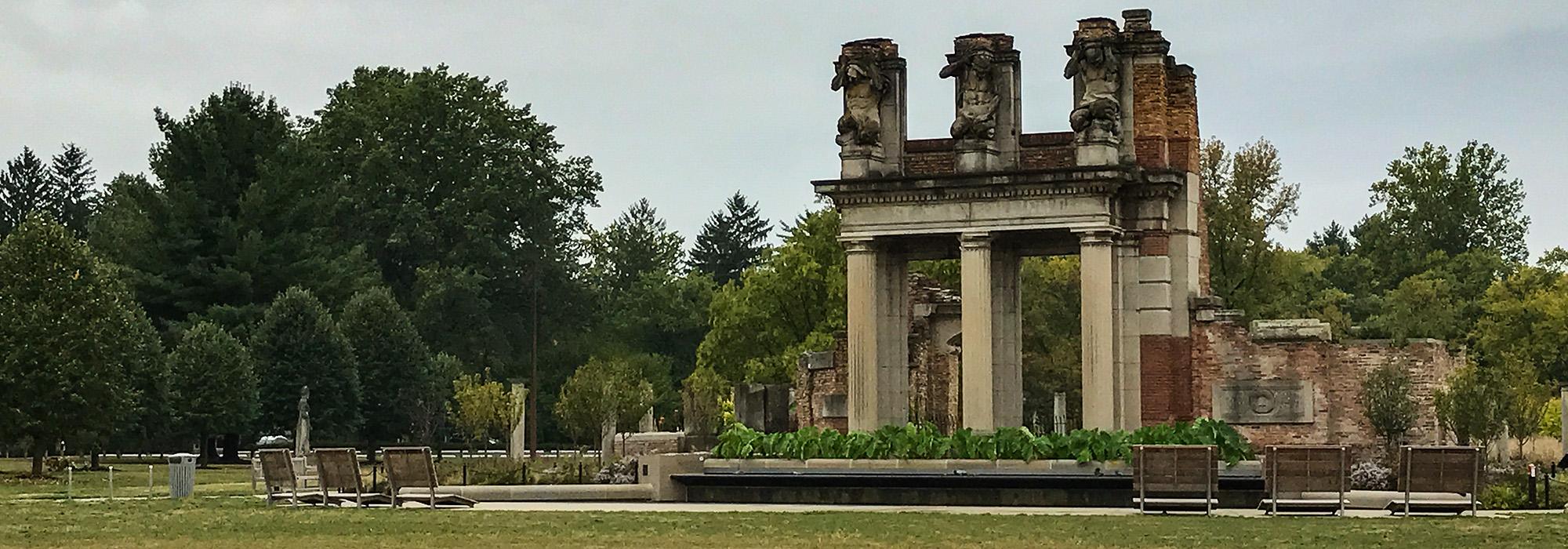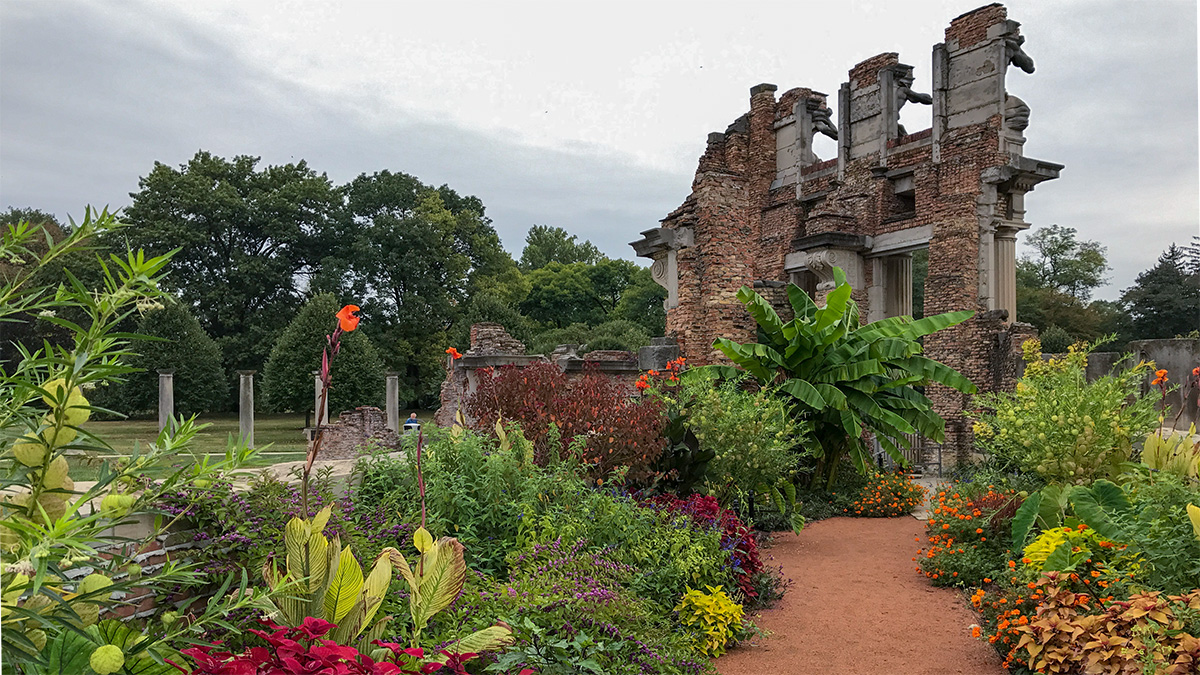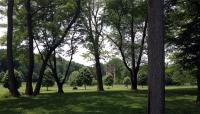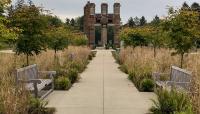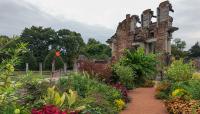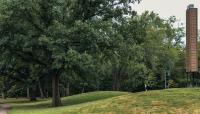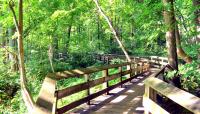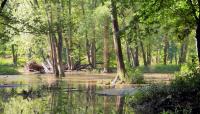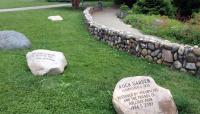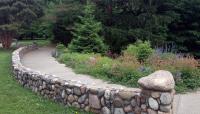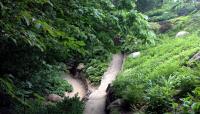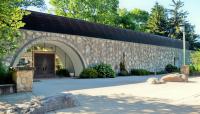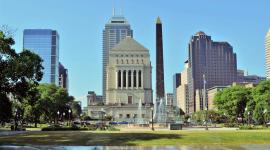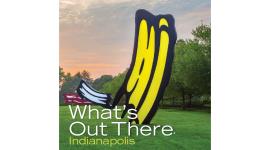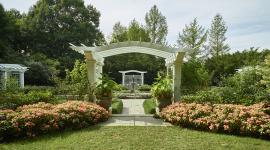Landscape Information
One of Indianapolis’ oldest parks, this 94-acre site is located six miles north of downtown along the western bank of the White River. The land housed a gristmill and farm, along with dense beech-maple woodland, when it was sold in 1892 to John Hampden Holliday, newspaperman, financier and civic leader, for use as his country estate. The Hollidays built a 23-room house with chestnut trees lining the drive, and planted arborvitae, copper beeches and a rose garden. They donated the estate to the City of Indianapolis in the 1930s, and botanist Willard Clute was chosen to develop the property into a public park. Clute designed a botanical garden, importing exotic plants from around the world. At the same time, the Works Progress Administration developed woodland pathways and drives leading down to the ravine. The paths were often edged with stone boulders, creating a hillside rock garden that was rehabilitated in 1994 and again in 2007.
One of the park’s most distinctive features is “The Ruins,” a 1973 installation by Indianapolis-born artist Elmer Taflinger, who was selected following a national competition. He incorporated remnants from the façade of New York City’s St. Paul Building into a garden with a reflecting pool, fountains and a series of columns. In 1976, in honor of the Bicentennial, Taflinger designed a representation of the National Mall with formal rows of English hornbeam trees – one for each state of the Union – and thirteen groups of evergreens representing the original colonies. Single columnar oaks were also planted, and blocks of Indiana limestone were inscribed with the Preamble to the Constitution. The park holds more than 400 species of trees and shrubs, and includes a nature center, playground, native prairie, and over 3.5 miles of hiking trails, including a stretch along the White River with a woodland landscape.



